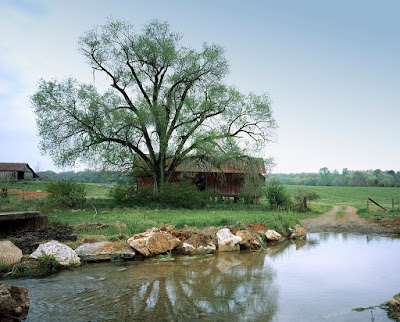Incorporating DNA Testing with Traditional Research
As I have stated in previous articles my paternal Lee
family has been elusive and left fragments of a paper trail. I envy those lucky
family historians who have stories passed down by their ancestors through the
generations; or have family photos of their ancestors; I would even take a family
Bible with dates and places noted in it, and anecdotes that were written by an
ancestor and passed down. That would be a wonderful keepsake to have but that
is only a dream since no such family treasure exits from my ancestors. There is a valuable tool that is available in
my lifetime that my ancestors didn’t have and that is DNA testing. DNA testing
in cooperation with traditional genealogy is being used to prove or disprove a
genealogical hypothesis. DNA testing is used to connect with biological related
families and verify those family lines.
You may have your own personal reasons for using DNA
testing with genealogical research. I have been using DNA test results with my
genealogical research since the first DNA test, the YDNA test, was introduced
as a tool for genealogists. The main reason that I began using DNA testing was to
prove or disprove a family story. Later as autosomal DNA was available, I
jumped on board for the autosomal DNA test and also tested family members,
cousins, and half cousins. There was a difficult paternal puzzle and I had gone
as a far as I could in researching my paternal line. Therefore, it was time to
utilize the tool of DNA testing to try and solve this puzzle. My brother YDNA tested to prove or disprove our
biological grandfather, my father’s father. There was also long-standing puzzle
on my paternal Lee line, my grandmother’s line so it was time to autosomal test
family members and paternal cousins and find a male Lee volunteer to YDNA test.
If I could find new cousins on the Lee paternal line, then I could possibly solve
the long-standing puzzle. The task at hand is researching the direct line and
the collaterals back to my third great grandparents Jordan Lee and wife Lydia. My
plan is to identify the parents of Jordan Lee.
Jordan Lee’s parents haven’t been identified but I am
using DNA in cooperation with my research to confirm family lines and connect
with biological living cousins. DNA testing is not a replacement for
traditional genealogical research but is used with your research to prove and
disprove your assumptions about your ancestors. DNA is also used to estimate
your deep ancestry from many generations’ past. Records are being digitized and
added online at a rapid pace, so it is a matter of time and the parents of
Jordan Lee will be identified using the two tools, and they will have their
place in my family tree.
Another important reason that I use DNA testing in cooperation
with my traditional genealogical research is to utilize the best practices of
research using all available tools and to make sure that my research is as
accurate as possible for each of my ancestors.
If you have been considering DNA testing, then develop
a plan and determine your goals for the best results. Having a plan will keep
you focused and goal oriented. When I first used DNA testing, I began with one
family line – the Eley surname. That kept me focused on that one family line. I
have researched the Eley family back to 1860 Drew County Arkansas and could not
find Robert Lawrence Eley on records after that year. YDNA testing helped me in
solving this difficult problem.
DNA testing is growing at a rapid pace and tools are
being developed to use with the test results. Who knows what the future holds
for genetic genealogists. But in the mean time it is a tool that I will
continue to use and encourage others to use incorporation with their research.
 |
| Library of Congress |
Source
Highsmith, Carol M, photographer. Rural countryside in Louisiana. Louisiana United States, None. [Between 1980 and 2006] Photograph. https://www.loc.gov/item/2011630721/.
Highsmith, Carol M, photographer. Rural countryside in Louisiana. Louisiana United States, None. [Between 1980 and 2006] Photograph. https://www.loc.gov/item/2011630721/.
No comments:
Post a Comment